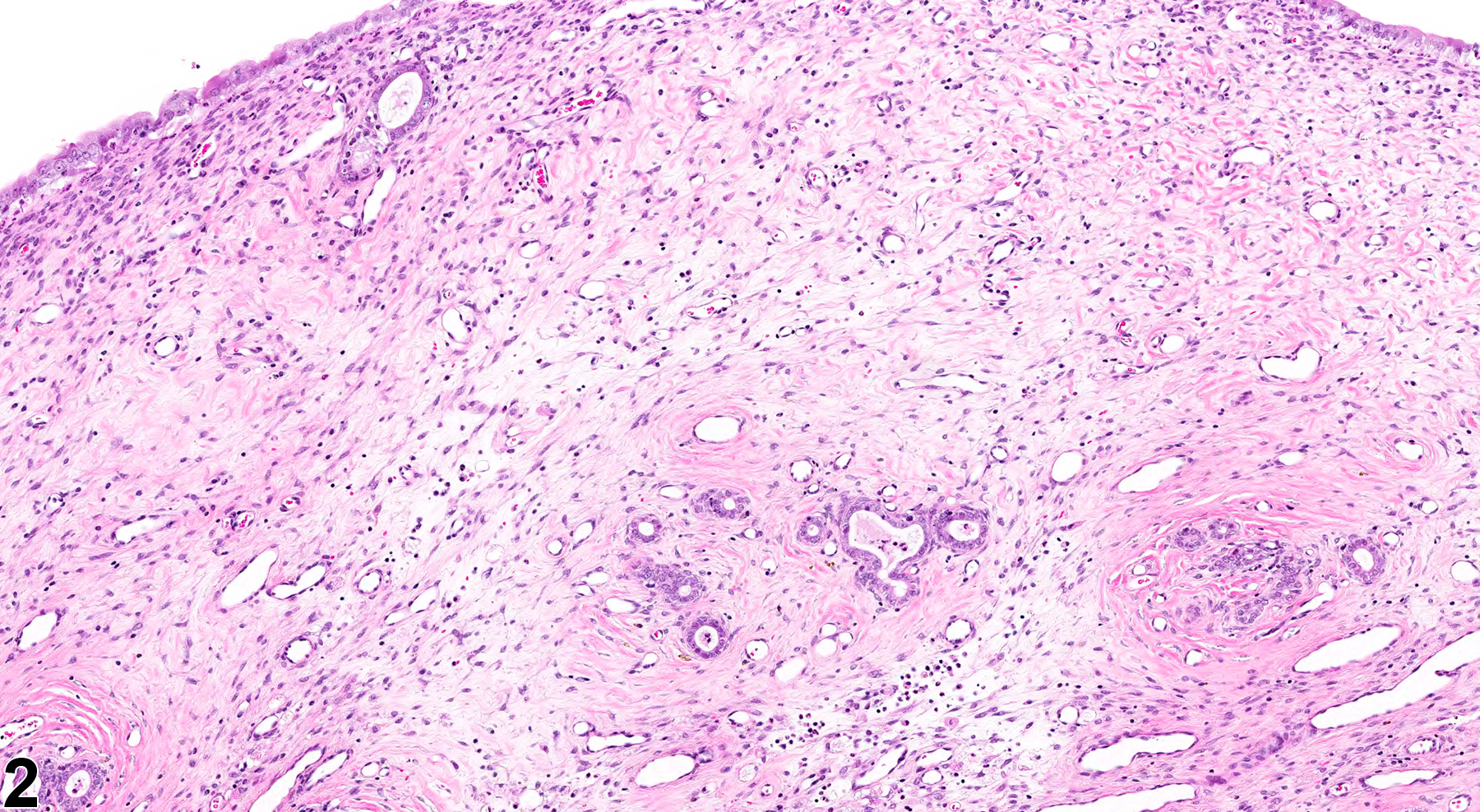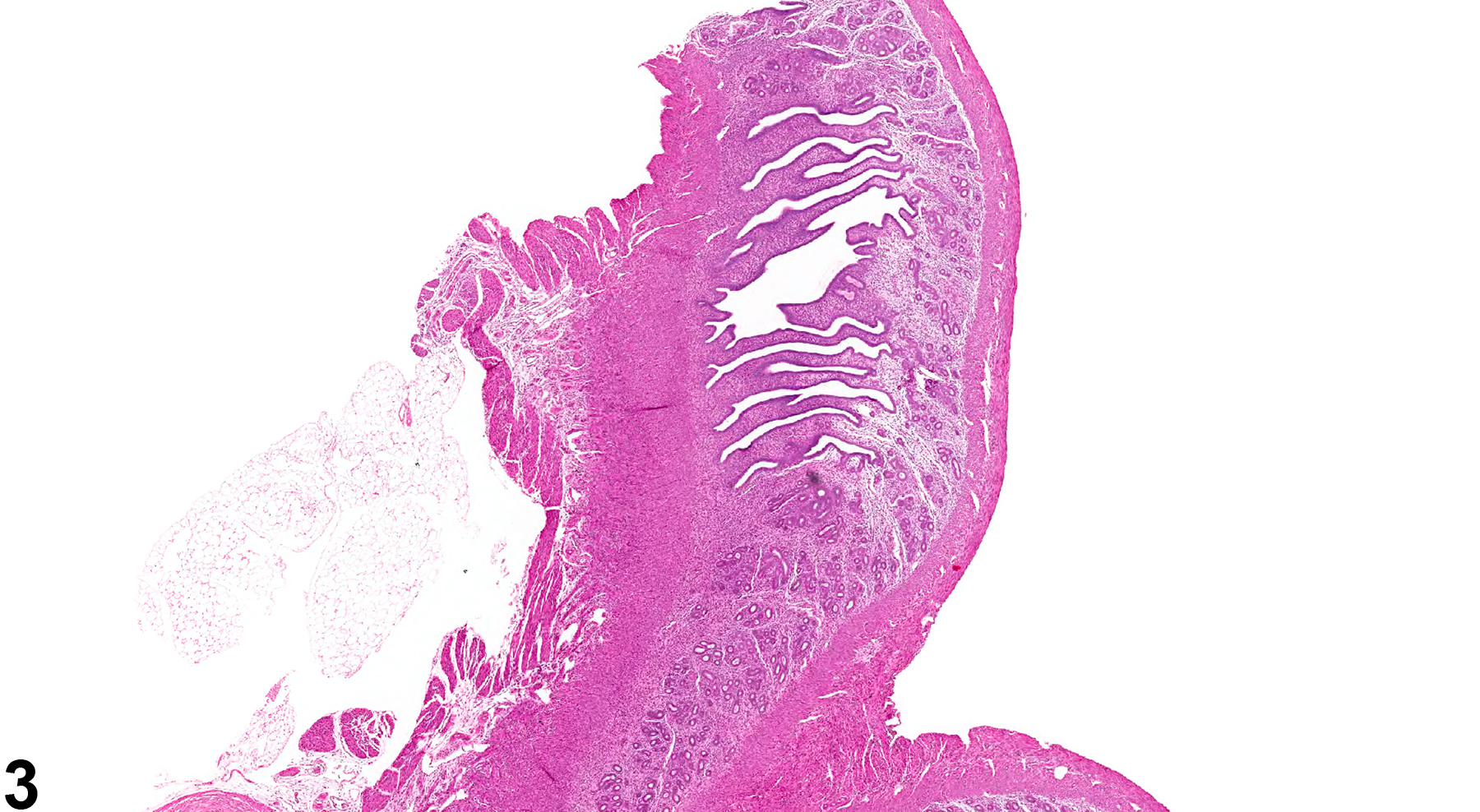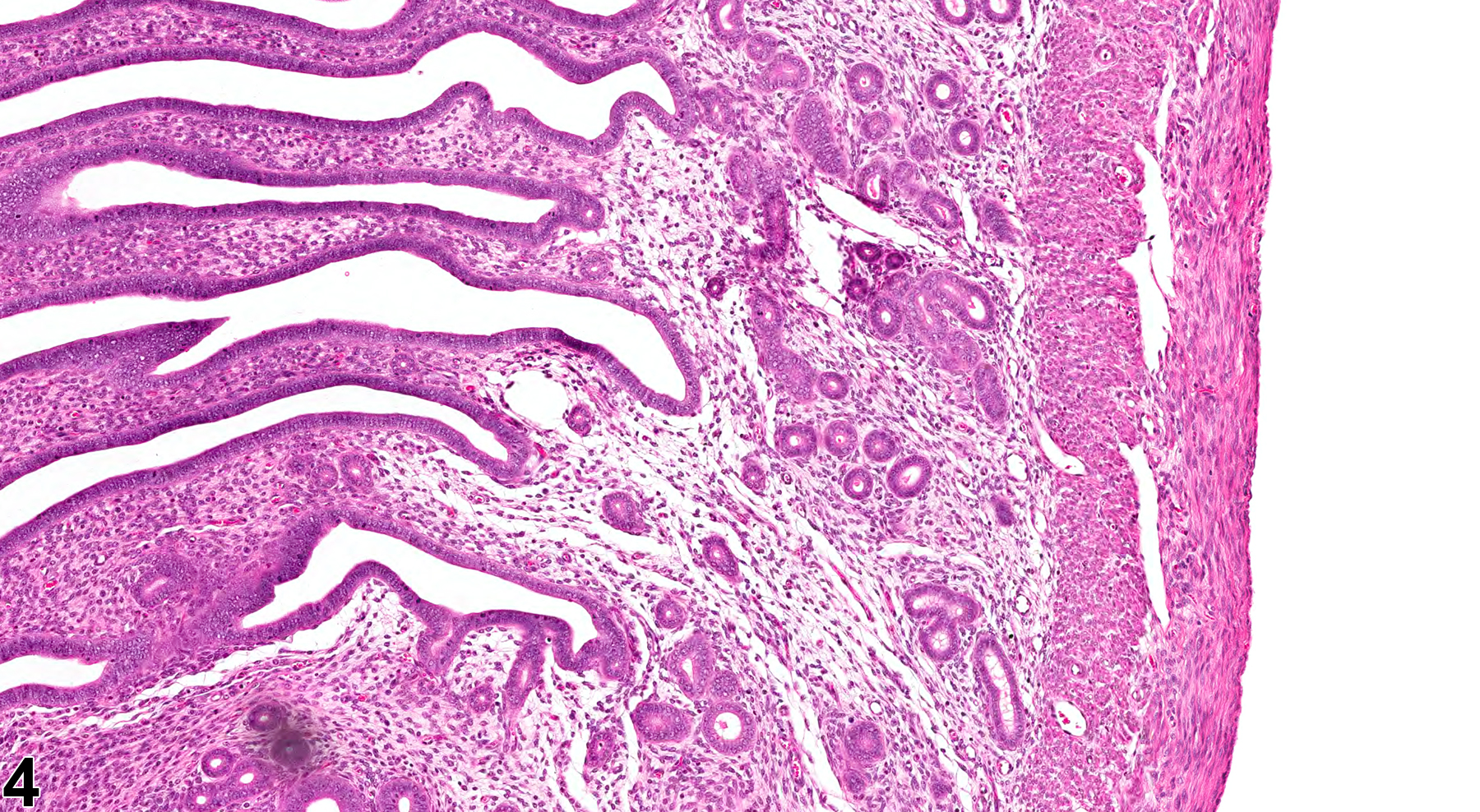Reproductive System, Female
Uterus - Edema
Narrative
Edema of the uterine stroma adjacent to the endometrial epithelium can be seen normally in proestrus, particularly toward the end of the phase and in the beginning of estrus. Uterine edema may be part of inflammation or result from vascular compromise or changes in vascular permeability. Edema has the histologic appearance of increased clear space between cells and tissue components (Figure 1, Figure 2, Figure 3, and Figure 4).
Uterus - Edema should be diagnosed only when it is an effect of treatment. When diagnosed, it should be graded. Edema that is secondary to an inflammatory or other primary process should not be diagnosed separately. Edema that is considered a normal cyclical change (i.e., during proestrus) should not be diagnosed.
National Toxicology Program. 1990. NTP TR-381. Toxicology and Carcinogenesis Studies of d-Carvone (CAS No. 2244-16-8) in B6C3F1 Mice (Gavage Studies). NTP, Research Triangle Park, NC.
Abstract: https://ntp.niehs.nih.gov/go/11301Westwood FR. 2008. The female rat reproductive cycle: A practical histological guide to staging. Toxicol Pathol 36:375–384.
Abstract: https://www.ncbi.nlm.nih.gov/pubmed/18441260
Uterus - Edema in a female F344/N rat from a chronic study. There is extensive edema in the endometrium and myometrium.





